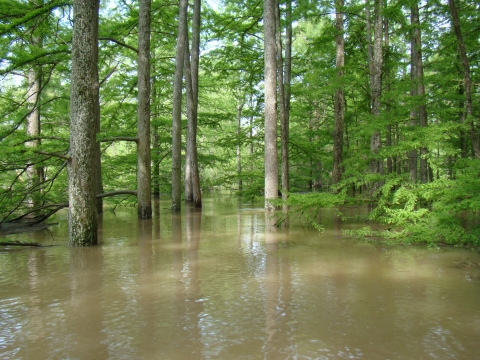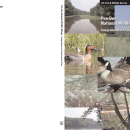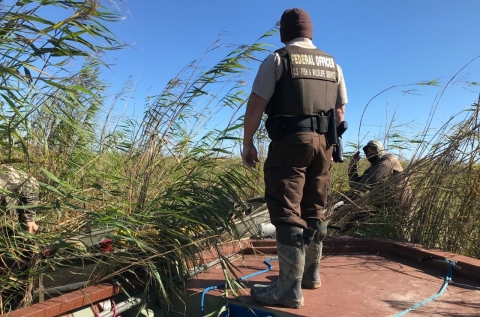What We Do
Moist Soil
The refuge has three open wetlands that are managed as moist soil units. In the spring, water is slowly drained off these areas, and they’re often burned or disked to prepare a good seed bed. Moist soils provide the right conditions for natural waterfowl foods to germinate and grow. These waterfowl food plants include smartweed, wild millet and panic grass. In the fall, these areas are flooded to make the food plants accessible for ducks and geese as they arrive from their migration journey.
Flooded Croplands
Most of our Refuge cooperative farming shares (approximately 200 acres) are left standing in the field, and then flooded with mobile pumps and captured rain water. Flooded corn and millet crops provide an extra food source for the waterfowl that stop over and winter on the refuge.
Green-tree Reservoir
The 150 acre Sullivan Green-tree Reservoir (GTR) is a section of bottomland hardwood forest surrounded by a mile-long levee. The levee lets us capture and hold rain water with the help of two water control structures. Seasonally flooding this forested area makes the acorns and other mast seeds available for ducks and geese to forage. It’s also a great place for them roost without being disturbed.To help plants and wildlife, refuge staff uses a variety of habitat management techniques to maintain, recover or enhance plant and wildlife values. Refuge staff carefully considers any management techniques and employ them in varying degrees according to the situation.
Management and Conservation
Laws and Regulations
Law Enforcement is critical to every aspect of wildlife conservation. The mission of the Law Enforcement program is to support the administration of the National Wildlife Refuge System through management and protection of natural, historical, and cultural resources, property, and people on lands and waters of our National Wildlife Refuges.



